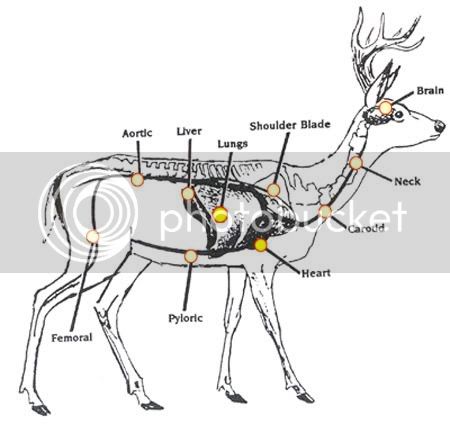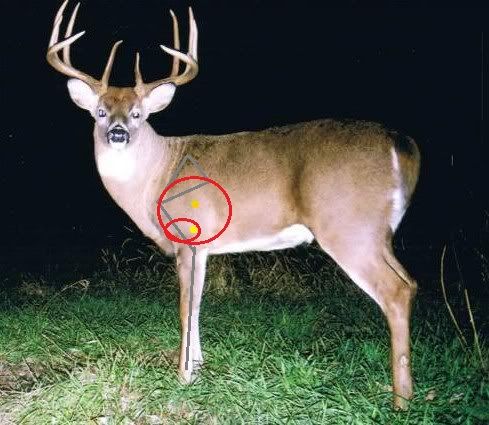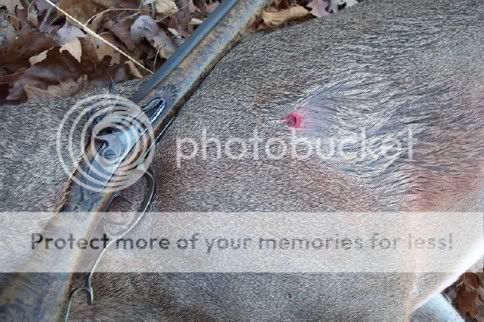Yellowhouse
32 Cal.
- Joined
- Nov 12, 2007
- Messages
- 29
- Reaction score
- 1
I've hunted with a traditional ML for nearly 30 years but my mainstay is a 50 cal Halfstock that I built long ago. I know its capabilities with a patched round ball and 75 gr of FFg.
However, the first rifle I built is a .45 Cal Southern Mtn flinter that has been carried to the deer woods a few times but never experienced the opportunity to be fired at a deer.
With the .45 round ball and 65 gr FFFg I'm a little apprehensive at shots on a 175 lb buck in rut (they are a different species than doe)that sometime takes some extra punch. I'm getting old in the chops and really don't want or need to be trailing down a deer for a great distance.
I nearly always take the traditional right behind the shoulder shot but with the .45 I'm wondering if a ball through the shoulders or a high neck shot (near the head" might be better.
What say you? Don't have many more years left to enjoy this and want the flinter to be more of my hunting memories.
However, the first rifle I built is a .45 Cal Southern Mtn flinter that has been carried to the deer woods a few times but never experienced the opportunity to be fired at a deer.
With the .45 round ball and 65 gr FFFg I'm a little apprehensive at shots on a 175 lb buck in rut (they are a different species than doe)that sometime takes some extra punch. I'm getting old in the chops and really don't want or need to be trailing down a deer for a great distance.
I nearly always take the traditional right behind the shoulder shot but with the .45 I'm wondering if a ball through the shoulders or a high neck shot (near the head" might be better.
What say you? Don't have many more years left to enjoy this and want the flinter to be more of my hunting memories.











